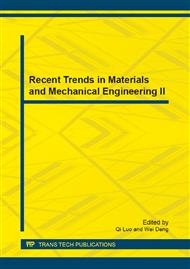p.154
p.160
p.167
p.177
p.185
p.194
p.202
p.209
p.215
Determination of Specific Heat of Eutectic Indium – Bismuth-Tin Liquid Metal Alloys as a Test Material for Liquid Metal - Cooled Applications
Abstract:
Currently, Russia, India, China, France, South Korea, and Japan are actively pursuing liquid metal cooled applications such as liquid cooled metal nuclear reactor concepts. The liquid metal coolants being considered for these designs are sodium, lead and lead-bismuth eutectic; these designs utilize reactive and toxic materials at temperatures up to 1073 K for nuclear power plant operations and other similar applications. To simulate these systems with the actual coolant material requires a high level of safety systems. Use of these materials in university experimental laboratory settings is difficult due to the safety hazards and that lead (Pb) is a designated substance requiring special permission to use. Therefore, a less toxic and less reactive liquid metal that can be used to simulate liquid metal cooled flows will allow for a greater number of investigations and experimentation of liquid metal flow with regards to the field of thermal hydraulics. Good candidates for a liquid metal experimental fluid are alloys from the indium-bismuth-tin system such as Fields metal, which by weight percent is 51% indium, 32.5% bismuth and 16.5% tin and possesses a melting temperature of 333 K. However, the thermodynamic properties of Fields metal and similar alloys in their liquid state are not well described in literature. This work experimentally measures the specific heat of the eutectic alloys of theindium-bismuth-tin tertiary system using a differential scanning calorimeter technique and analyzes the results to determine if the thermodynamic properties of the system have sufficient scaling for experimental modeling applications. The results verify the melting temperatures of the alloys and establish a relationship between temperature and specific heat.
Info:
Periodical:
Pages:
185-193
Citation:
Online since:
September 2013
Authors:
Price:
Сopyright:
© 2013 Trans Tech Publications Ltd. All Rights Reserved
Share:
Citation:


